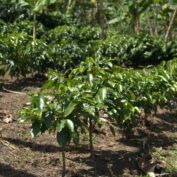From Day Laborer to Leader: Inside a Thriving Nicaraguan Coffee Farm
Manuel Herrera saw early on how coffee could transform his life. His thriving coffee farm is helping Manuel build a better life for his family.
Manuel Herrera saw early on how coffee could transform his life. His thriving coffee farm is helping Manuel build a better life for his family.
Our monthly photo series highlights the beauty and emotion in the lives of our clients around the world. This month, we are featuring three women from three continents who exemplify what it means to be mothers, role models, and entrepreneurs.
Here are three of the most effective ways to reduce emissions at the small farm level, based on TechnoServe’s experience working with smallholder farmers around the world.
Women comprise 70% of the world's low-income people, making them especially vulnerable to climate change. But with the right support, they can be a tremendous force for protecting their livelihoods, their families, and the environment.

JDE Peet’s, USDA and TechnoServe to collaborate in program benefiting over 35,000 coffee producers
Meet Nelda Gaitan, a smallholder farmer and mother in Nicaragua who changed the trajectory of her farm to secure a brighter future for her daughters.
Meet Yader Blandín. This young Nicaraguan man joined a gender commission to challenge stereotypes and change the mentality of multiple generations within his community. TechnoServe knows engaging men is a critical component of empowering women in agriculture.
In Nicaragua, agriculture — and livestock production, in particular — is a primary driver of deforestation. Over the years, as cattle ranching has increased, so has land degradation throughout the country. By adopting silvopastoral systems, which integrate trees, shrubs, and grasses with livestock, farmers can improve their livelihoods and restore local ecosystems.
Our monthly photo series highlights the beauty and emotion in the lives of our clients around the world.
In this blog post, we explore the causes and effects of world hunger, as well as how we can stop it. Learn more about the impact of poverty, climate change, conflict, and economic factors on food security and find out how targeted interventions can help reduce world hunger and malnutrition.